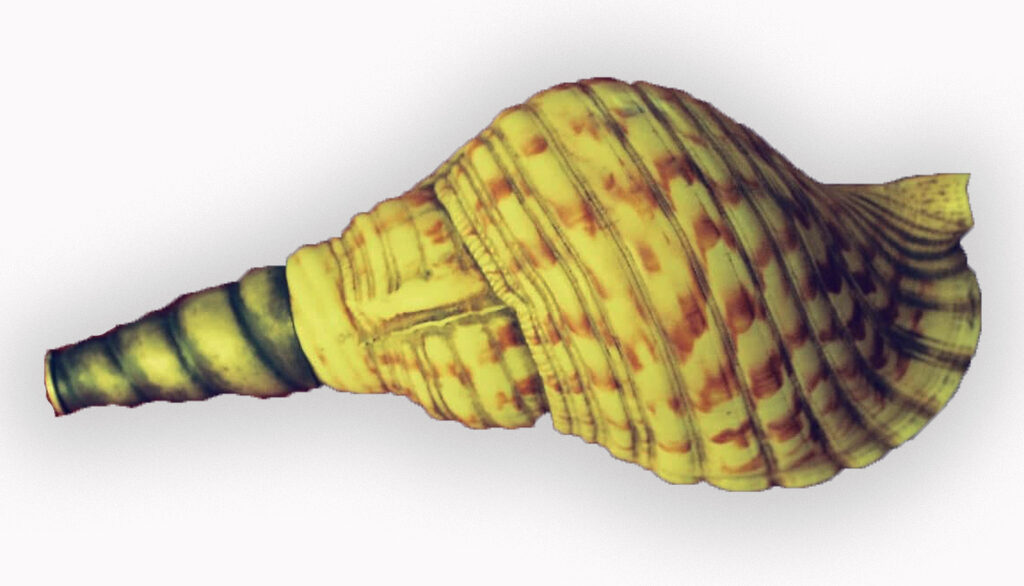ស័ង្ខ ជាប្រភេទខ្យងសមុទ្រម្យ៉ាង មានសណ្ឋាននិងរូបរាងល្អស្រស់ណាស់ ដែលគេយកមកច្នៃជាគ្រឿងលម្អសម្រាប់ដាក់តាំងនៅតាមគេហដ្ឋានឬការិយាល័យនានា។ គេក៏យកខ្យងស័ង្ខទៅប្រើប្រាស់សម្រាប់ដាក់វត្ថុផ្សេងៗ ដូចជាដាក់ទឹក និងធ្វើទៅជាឧបករណ៍តន្ត្រី ហៅថា «ខ្យងស័ង្ខ» ឬ «ស័ង្ខ» ដោយកាត់គូទចោលបន្តិចឱ្យមានរន្ធជាបំពង់សម្រាប់ផ្លុំ។
ខ្យងស័ង្ខ ឬស័ង្ខ ជាឧបករណ៍តន្ត្រីមួយប្រភេទដែលមានអាយុកាលចាស់។ សៀវភៅ «តន្ត្រីខ្មែរ» Musique Khmère បានកំណត់ឫសគល់និងប្រភពរបស់ឧបករណ៍ស័ង្ខទៅវប្បធម៌តន្ត្រីមនខ្មែរ។ ឧបករណ៍តន្ត្រីស័ង្ខ មានសូរ «ទូត» តែមួយប៉ុណ្ណោះ ដូច្នេះមិនអាចបញ្ចេញជាបទភ្លេងអ្វីមួយបានឡើយ។ យ៉ាងណាមិញ ស័ង្ខ មានសូរធ្ងន់និងជ្រៅជាសណ្ឋានទឹករលកដោយការប្រើបបូរមាត់និងដង្ហើមរបស់អ្នកផ្លុំ។
គេឃើញមាន ខ្យងស័ង្ខ ឬ ស័ង្ខ នៅក្នុងតំបន់ជាច្រើនលើពិភពលោក។ នៅប្រទេសឥណ្ឌា គេហៅខ្យងស័ង្ខឬស័ង្ខនេះថា «sankhu» ដែលគេប្រើប្រាស់នៅក្នុងពិធីសាសនានៅតាមវត្តអារាមដែលគេតែងតែឮសូរសំឡេង ដូចជាការហែក្បួនឬនៅក្នុងនិងក្រៅព្រះវិហារនៅមុខព្រះបដិមាសក្ការៈហ៊ិនឌូ។
គេយកខ្យងស័ង្ខដែលមានសណ្ឋាននិងរូបរាងប្លែកគ្នាជាច្រើនប្រភេទ និងទំហំតូចធំទៅច្នៃ។ ខ្យងខ្លះ គេយកទៅឆ្លាក់ជារូបផ្សេងៗ ទៅជាវត្ថុសិល្បៈនិងវត្ថុសក្ការៈសម្រាប់តាំងនិងថ្វាយបូជានៅក្នុងពិធីសាសនា ដូចដែលយើងឃើញមាននៅប្រទេសឥណ្ឌា ជាដើម។
នៅកម្ពុជា គេប្រើស័ង្ខពិសេសតែនៅក្នុងព្រះរាជពិធិផ្សេងៗក្នុងនិងក្រៅព្រះបរមរាជវាំង។ បារគូដែលជាព្រាហ្មណ៍បុរោហិត (អ្នកថែរក្សាព្រះខ័ន្ធរាជនិងទេវរូប ព្រមទាំងព្រះរាជពិធីក្នុងព្រះបរមរាជវាំង) ប្រើឧបករណ៍តន្ត្រីខ្មែរបុរាណមួយនេះ ដើម្បីនឹងដួសទឹកនៅក្នុងព្រះរាជពិធី ឬផ្លុំផ្តល់ជាសូរ «ទូត ទូត» ជាសញ្ញា និងដើម្បីថ្វាយព្រះពរជ័យ ដងនិងស្រោចទឹកមន្តសក្តិសិទ្ធជ័យមង្គល ថ្វាយទឹកក្លស្សស័ង្ខនិងថ្វាយស្លឹកព្រះព្នៅ ថ្វាយដល់ព្រះមហាក្សត្រ ជាពិសេសព្រះរាជពិធីសិរីមង្គល ចម្រើនព្រះជន្ម និងព្រះរាជាភិសេក។ នៅក្រៅព្រះបរមរាជវាំង យើងក៏ឃើញមានបារគូផ្លុំស័ង្ខនៅក្នុងព្រះរាជពិធីច្រត់ព្រះនង្គ័ល និងព្រះរាជពិធីបួងសួងសុំព្រះអគ្គីដើម្បីថ្វាយព្រះភ្លើង។
——————————-
THE ATTRIBUTE OF PEALI
Conch-shell called “khyang saing or saing” is a kind of sea-shell coming in various sizes, large and small. It is colorful and beautiful. It can be made into objects of decoration in the house or office. Conch-shell is also useful for storing small objects or for scooping water, especially in ceremonies.
Saing or conch-shell is one of the oldest wind instruments found in Cambodia. The book Musique Khmère traces the roots of the instrument to the musical culture of the local Mon-Khmer origin (1969: 5). A conch-shell is cut at the pointed end to have a small hole for blowing and creating sounds.
Similar instruments are found elsewhere in other parts of the world. In India, for instance, the conch-shell is called sankhu. It is used in the religious context and thus found in temples and sounded during ceremonies, in processions, and before the shrines of Hindu deities (Vaidyanathan 1994: 167, 172).
In Cambodia, the Saing is most commonly used in Royal ceremonies. It is blown by the Brahmin priests. It serves at certain court devotional functions during the propitiatory ceremonies or to signal the arrival of the sovereign (Smithies 1986: 72). Each of these instruments only has a single pitch. Although it is incapable to play the multiple-pitched melody, it provides a deep and mellow drone and sound modulation by the manipulation of the player’s lips and breath.
Saing, as an object, is also used by Brahmin priests to scoop holy water during royal ceremonies in the court.
អត្ថបទដើម៖ បណ្ឌិត សំ សំអាង








